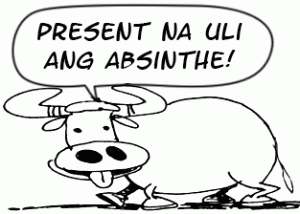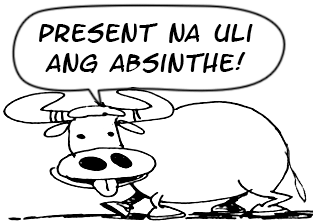 PONTARLIER, France—It’s the drink that, more than any lover, drove a generation of artists, from Van Gogh to Oscar Wilde and Verlaine, to distraction.
PONTARLIER, France—It’s the drink that, more than any lover, drove a generation of artists, from Van Gogh to Oscar Wilde and Verlaine, to distraction.
Absinthe was their muse, their creative rocket fuel, but the fabled “fee verte” (green fairy), which they venerated in painting and prose, was also their ruin. That was the theory, at least, when France banned the green-tinted liquor during World War I, claiming it drove drinkers insane.
A century later, absinthe’s reputation has been rehabilitated, and drinkers are once again coming under its seductive spell.
“We are progressing slowly, but we are progressing,” said François Guy, an absinthe distiller whose output has increased exponentially over the past decade, shooting up from 7,200 liters (7,600 quarts) in 2001 to 30,000 liters (31,700 quarts) last year.
Since France lifted the ban on selling and drinking absinthe in 1988, Guy has been hard at work to help the spirit shed its dark—and, as it turns out, inaccurate—image.
“Absinthe remains the forbidden drink that drives people crazy—there will always be that mysterious aura around it,” said Fabrice Herard, organizer of the Absinthiades events that showcase the liquor in Pontarlier, its historical French home near the border with Switzerland.
Switzerland is where the drink, which is made from artemisia absinthium, commonly known as wormwood, and anise, originated in the 18th century.
But it was in late 19th-century Belle Epoque Paris that absinthe had its heyday, becoming the favorite refreshment of Vincent Van Gogh and Henri de Toulouse-Lautrec, and a string of scribes, including poets Charles Baudelaire and Paul Verlaine.
The ravaging mental effects it had on many addicted drinkers—described in detail in French writer Emile Zola’s “L’Assommoir”—led France to prohibit the alcohol in 1915.
Link to insanity
Authorities explained the prohibition with evidence linking the thujone chemical in absinthe to the insanity suffered by many of its consumers, who gained notoriety for being the most hopeless and unruly of alcoholics.
In pinning the mind-blowing effects of absinthe on thujone, however, they breezily discounted the potency of its 45 to 72 alcohol degree content.
“Absinthe drove people crazy because they drank too much of it, at too high alcohol strengths,” said Guy, whose eponymous family distillery was found in Pontarlier by his grandfather in 1890.
It took over 70 years for the authorities to review their verdict on absinthe. When they eventually lifted the prohibition in 1988, they set out several conditions.
The drink could not be called absinthe. It had to be marketed as “a spirit made from extracts of the absinthe plant.” And its thujone level could not exceed 35 milligrams per liter.
The first products matching those specifications began appearing in France in 1999. Use of the absinthe name was eventually authorized in 2011.
France now has around 15 distilleries producing 800,000 liters of the green spirit each year, according to the French Federation of Spirits Makers.















































